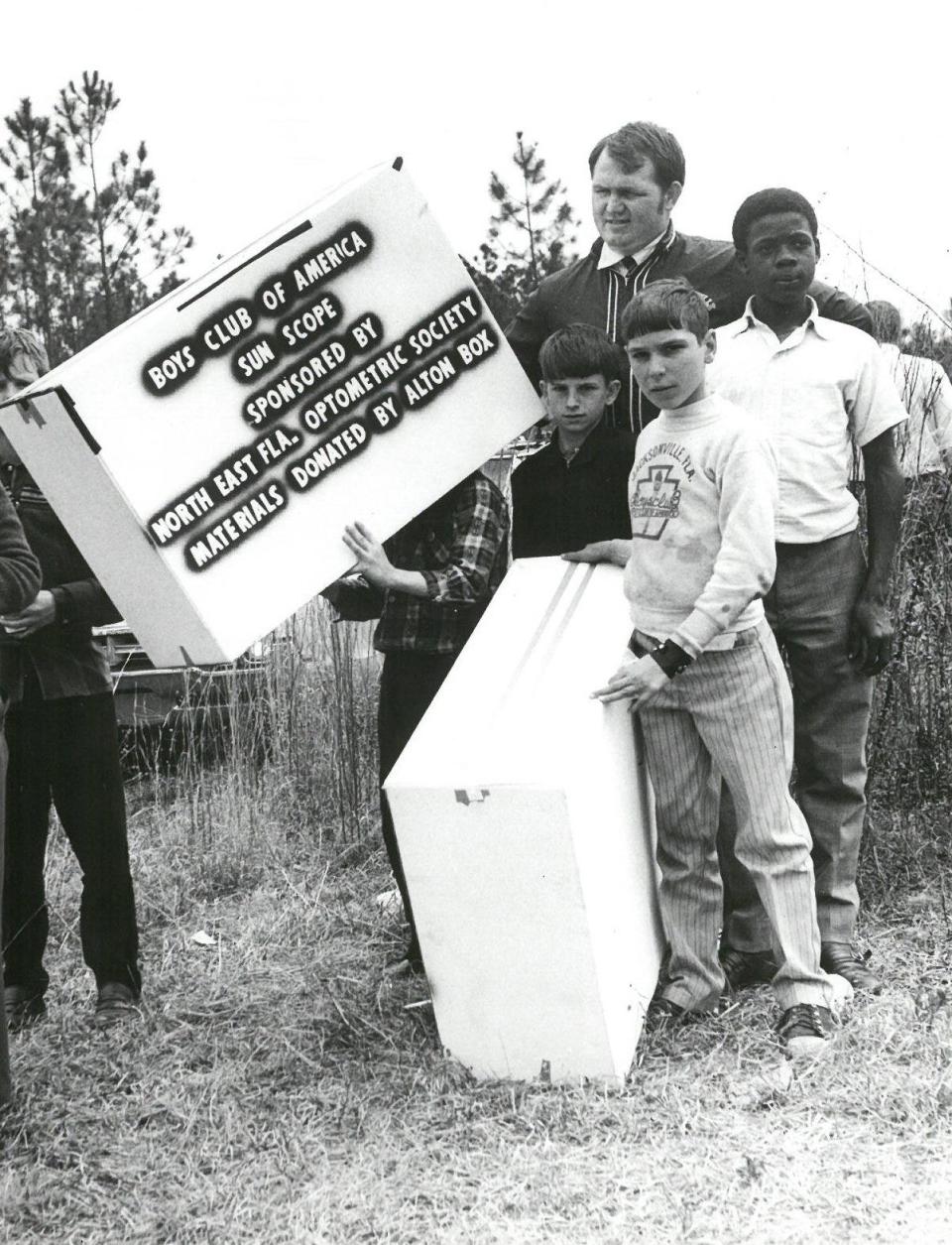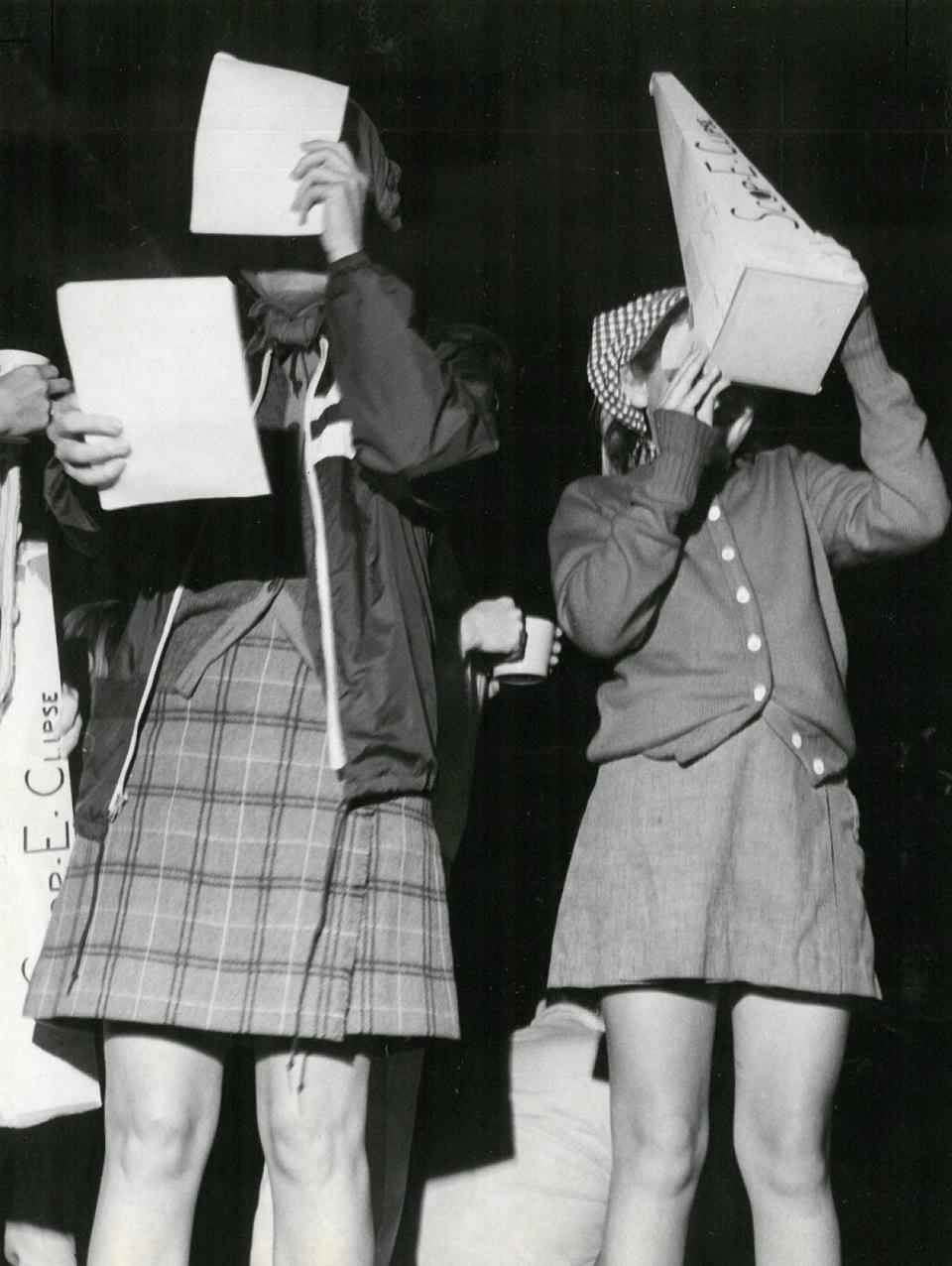Total solar eclipse had Florida and Georgia buzzing in March 1970
On March 7, 1970, North Florida and South Georgia was gripped by eclipse mania, and astronomers and the local and national media fanned out across the region buzzing about a total solar eclipse that was racing in that direction. Here, finally, after years of anticipation, was the chance to see the sun blotted out by the shadow of the moon.
It was an 89-mile wide swath of darkness that would start in the Pacific, cross Mexico and the Gulf of Mexico, then come ashore again in Perry, in Florida’s Big Bend, before bending to the northeast.
Jacksonville wasn't quite in the path of totality, but it was close: Jaxons were told they would see 98.7% of the sun blocked, peaking at 1:21 p.m. as a kind of twilight. Meanwhile, down in Gainesville, students at the University of Florida planned a mid-eclipse love-in and psychedelic rock show, according to organizer Andy Kramer, who was “known locally for the wildest hair on campus,” as the Times-Union noted.
2017: What's a total solar eclipse and why this one is so unusual
The moon and the sun: 2017 eclipse blocked out 90% of the sun in Jacksonville
A lifelong eclipse chaser's promise to America: 'You will never be the same'
In anticipation, Gov. Claude Kirk declared Perry, a town of 10,000 in Taylor County not far from the Gulf of Mexico, the “Eclipse Capital of the World.” It would have three minutes and 13 seconds of total darkness and would be the first place in the U.S. to witness the eclipse.
Some 20,000 professional and amateur astronomers from across the world came to Perry but were frustrated by heavy clouds from a persistent low-pressure system. As the eclipse loomed, a busload of schoolchildren from Brevard County sang words from a hit from the previous spring: “Let the sunshine in.”

But no luck: It got dark, but the clouds obscured even an outline of the sun, and some luckless astronomers didn't even bother to go to their telescopes.
In Jacksonville that morning, four chartered buses left from the Gator Bowl at 7 a.m., guided by ham-radio operators to wherever the best viewing conditions would be. They ended up in Waycross, Ga., in the path of totality, but still cloudy.
Meanwhile, a group of 25 from Riverside Baptist Church had traveled in motorboats into the heart of the Okefenokee Swamp, where they saw the eclipse through moss-hung cypress as the swamp fell silent, but for a bird that began singing at dusk.

A biologist in the Okefenokee told The New York Times that mosquitoes came out as totality loomed, “just like they do at dusk.” A flock of 47 buzzards circling overhead flew down to land on cypress branches for the duration. And tree frogs began serenading the darkness as it moved, through the clouds, to gradually envelop the swamp.
This article originally appeared on Florida Times-Union: In 1970, a total solar eclipse near Jacksonville thrilled astronomers

